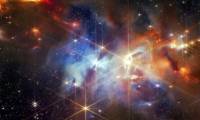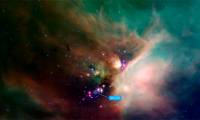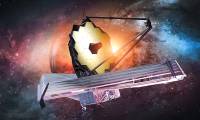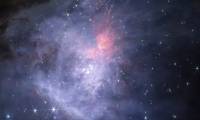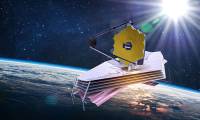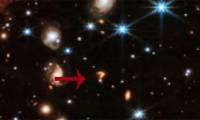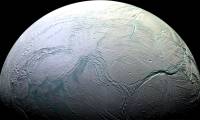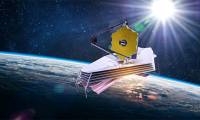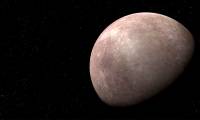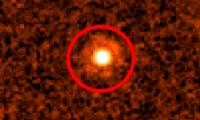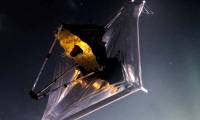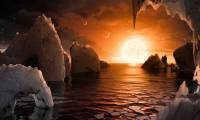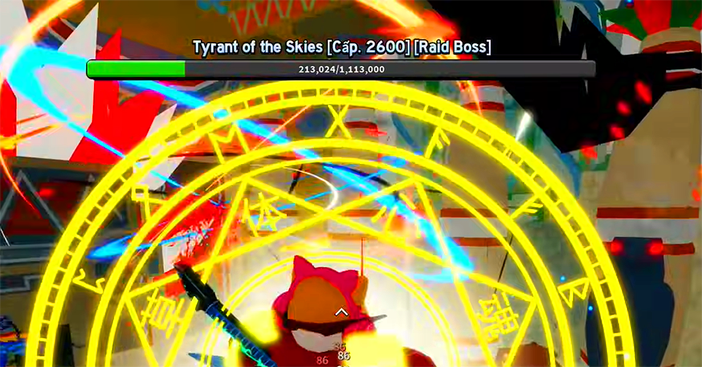
another stunning new image has just been sent back from the world's most expensive space telescope, james webb.

another stunning new image sent back from the world's most expensive space telescope, the james webb space telescope, shows the moment two galaxies are about to collide.

one of the groundbreaking capabilities of the james webb space telescope is its ability to not only detect very distant planets, but also allow scientists to observe their
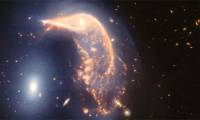
last july 12, marked the two-year milestone since the first images taken by the most expensive space telescope in history, james webb, were published.

another stunning new image sent back from the world's most expensive james webb space telescope shows the moment a young star is in the process of forming.

another beautiful new image was sent back from the world's most modern space telescope system james webb, showing the famous serpens nebula.

sometimes, even famous objects that have been observed and studied for a long time contain many surprises.

the newly discovered galaxy is called jades-gs-z14-0.

it is an exoplanet named wasp-43 b, located 280 light years from earth.

the orion nebula is one of the most observed and photographed objects in the sky, and also one of the most studied celestial bodies.

named sn 1987a, this is a supernova that occurs when a giant star runs out of fuel and collapses at the end of its life.

nicknamed el gordo, or fat galaxy cluster, this galaxy cluster is thought to be more than 2 million billion times the mass of the sun.

although it is not clear what this 'question mark' is, but based on its shape and color, the space telescope science institute (stsci), which runs the webb telescope project,

water is considered one of the essential elements constituting life, and is also the most studied chemical compound in the universe.

normally, a typical black hole can have about 10 times the mass of the sun. however, supermassive black holes are usually much heavier.

since the late 1990s, nasa has worked with the european space agency to develop james webb, at a cost of about 10 billion usd.

studying distant planets makes it difficult for scientists not only because of their physical distance, but also because they can harbor properties that make observation and

the james webb super telescope has captured glass-jwst-bd1 - a brown dwarf, a type of half-planet, half-star that is difficult to explain and the most difficult to find in the

scientists continue to hold their breath waiting for the james webb space telescope to reach its destination, thereby conducting astronomical research.

nasa revealed the first studies of the atmosphere of seven earth-like planets, the area where life exists. invite you to consult!
 another stunning new image has just been sent back from the world's most expensive space telescope, james webb.
another stunning new image has just been sent back from the world's most expensive space telescope, james webb. another stunning new image sent back from the world's most expensive space telescope, the james webb space telescope, shows the moment two galaxies are about to collide.
another stunning new image sent back from the world's most expensive space telescope, the james webb space telescope, shows the moment two galaxies are about to collide. one of the groundbreaking capabilities of the james webb space telescope is its ability to not only detect very distant planets, but also allow scientists to observe their
one of the groundbreaking capabilities of the james webb space telescope is its ability to not only detect very distant planets, but also allow scientists to observe their last july 12, marked the two-year milestone since the first images taken by the most expensive space telescope in history, james webb, were published.
last july 12, marked the two-year milestone since the first images taken by the most expensive space telescope in history, james webb, were published. another stunning new image sent back from the world's most expensive james webb space telescope shows the moment a young star is in the process of forming.
another stunning new image sent back from the world's most expensive james webb space telescope shows the moment a young star is in the process of forming. another beautiful new image was sent back from the world's most modern space telescope system james webb, showing the famous serpens nebula.
another beautiful new image was sent back from the world's most modern space telescope system james webb, showing the famous serpens nebula. sometimes, even famous objects that have been observed and studied for a long time contain many surprises.
sometimes, even famous objects that have been observed and studied for a long time contain many surprises. the newly discovered galaxy is called jades-gs-z14-0.
the newly discovered galaxy is called jades-gs-z14-0. it is an exoplanet named wasp-43 b, located 280 light years from earth.
it is an exoplanet named wasp-43 b, located 280 light years from earth. the orion nebula is one of the most observed and photographed objects in the sky, and also one of the most studied celestial bodies.
the orion nebula is one of the most observed and photographed objects in the sky, and also one of the most studied celestial bodies. named sn 1987a, this is a supernova that occurs when a giant star runs out of fuel and collapses at the end of its life.
named sn 1987a, this is a supernova that occurs when a giant star runs out of fuel and collapses at the end of its life. nicknamed el gordo, or fat galaxy cluster, this galaxy cluster is thought to be more than 2 million billion times the mass of the sun.
nicknamed el gordo, or fat galaxy cluster, this galaxy cluster is thought to be more than 2 million billion times the mass of the sun. although it is not clear what this 'question mark' is, but based on its shape and color, the space telescope science institute (stsci), which runs the webb telescope project,
although it is not clear what this 'question mark' is, but based on its shape and color, the space telescope science institute (stsci), which runs the webb telescope project, water is considered one of the essential elements constituting life, and is also the most studied chemical compound in the universe.
water is considered one of the essential elements constituting life, and is also the most studied chemical compound in the universe. normally, a typical black hole can have about 10 times the mass of the sun. however, supermassive black holes are usually much heavier.
normally, a typical black hole can have about 10 times the mass of the sun. however, supermassive black holes are usually much heavier. since the late 1990s, nasa has worked with the european space agency to develop james webb, at a cost of about 10 billion usd.
since the late 1990s, nasa has worked with the european space agency to develop james webb, at a cost of about 10 billion usd. studying distant planets makes it difficult for scientists not only because of their physical distance, but also because they can harbor properties that make observation and
studying distant planets makes it difficult for scientists not only because of their physical distance, but also because they can harbor properties that make observation and the james webb super telescope has captured glass-jwst-bd1 - a brown dwarf, a type of half-planet, half-star that is difficult to explain and the most difficult to find in the
the james webb super telescope has captured glass-jwst-bd1 - a brown dwarf, a type of half-planet, half-star that is difficult to explain and the most difficult to find in the scientists continue to hold their breath waiting for the james webb space telescope to reach its destination, thereby conducting astronomical research.
scientists continue to hold their breath waiting for the james webb space telescope to reach its destination, thereby conducting astronomical research. nasa revealed the first studies of the atmosphere of seven earth-like planets, the area where life exists. invite you to consult!
nasa revealed the first studies of the atmosphere of seven earth-like planets, the area where life exists. invite you to consult!